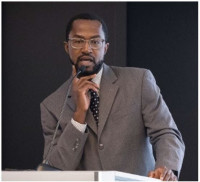Natural Catastrophes
City Resilience
Post-Doctoral Fellowships
Spain
Landslides : towards more efficient mitigation measures
A hybrid numerical method to model a complex multi-physics phenomenon
To develop a performant computational tool for landslide simulation, Dr. Alessandro Franci plans to associate different existing numerical methods to create a new hybrid numerical method. To conduct his project, him and his team will proceed in consecutive steps. « First, I will focus on modeling the coupling between rigid bodies and free-surface fluids, as the motion of stones and boulders within a mudflow.Then, during my stay in Milan at the ‘Politecnico di Milano’, I will meet up with experts to enhance the constitutive modelling of mudslides . Finally I will work on the impact of a heterogeneous material against infrastructures ». « Once all these developments are implemented , I will focus on one of the project’s biggest challenges, that is to reduce the computational cost of the model ». Running 3D models requires enormous amounts of resources, which translates into extensive amounts of time. « 3D models can take several days to produce results, we need it to go faster ». The last step will be to assess the computational tool’s forecasting capabilities. This will be done using experimental tests realised ad hoc and by simulating of historical landslides events.
Landslides affect every region of the world. It is estimated that 300 million people live in areas prone to them. Accurately simulating landslides, by tailoring models according to the landscape and urban specificities, is crucial if we want to bring vulnerabilities to light and mitigate them. In this sense, Dr. Alessandro Franci’s project holds great promise for the future.

Alessandro
FRANCI
Institution
International Centre for Numerical Methods in Engineering
Country
Spain
Nationality
Italian
Related articles
Natural Catastrophes
Joint Research Initiative
Spain
Understanding Wildfire Risk: A Local-Scale Assessment Framework in Chile
Wildfire is a significant hazard across the globe, causing extensive economic, ecological and health impacts. While wildfires are common throughout... Read more

Marcos
RODRIGUES MIMBRERO
University of Zaragoza
Climate Change
City Resilience
AXA Award
United States
Centering Equity and Environmental Justice in the Context of Climate Adaptation
Watch the video and read his interview below: Tell us about yourself and the genesis of your interest in climate... Read more

Christian
BRANEON
